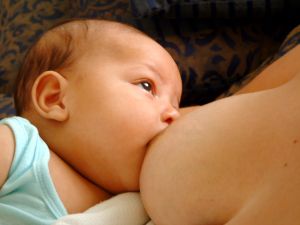 The ideal way to feed your baby is as nature intended, with breast milk. Breast milk is the most nutritionally complete food you can offer your infant for both physical and mental development. It contains:
The ideal way to feed your baby is as nature intended, with breast milk. Breast milk is the most nutritionally complete food you can offer your infant for both physical and mental development. It contains:
- All the energy, protein, fat, sugar, vitamins, minerals and fluids your baby needs for the first six months
- Antibodies to protect against disease
- Active scavenger immune cells to protect against disease
- Natural antibacterial and antiviral substances
- Essential fatty acids that are vital for your baby’s brain development
- Growth factors that influence growth and maturation of your baby
The ideal way to breast feed is to supply your baby with milk whenever needed, which is known as ‘on demand’. New government guidelines recommend putting your baby to the breast within an hour of birth. Ideally, your baby should be breast fed exclusively for four to six months. Breast milk should then continue to be given after weaning on to solids, up until at least your child’s first birthday. Many children continue to enjoy the benefits of breast feeding until the age of two years or beyond.
Every woman who is planning to have a baby should read Breast is Best by Drs Penny and Andrew Stanway (London: Pan) for a complete picture of breast feeding, including why it is by far the healthiest option for both mother and baby, hints and tips on how to get started, how to do it successfully including when working and how to overcome problems.
Diet for Mother
While pregnant and breast feeding, consider taking essential fatty acid supplements containing long-chain fatty acids (e.g. Efanatal, Milkarra in the UK; Neuromins in the US) designed to enhance the amount of essential fatty acids “essential for brain development” your baby receives.
Herbalism
Drinking fennel or dill tea after delivery helps to stimulate the production of breast milk. Drink no more than two cups of fennel tea daily during pregnancy except under the advice of a qualified herbalist. Agnus castus both stimulates milk production and can boost a low sex drive postnatally.
Overcoming Problems
Inflammation of the breast mastitis can occur at any time when breast feeding. In half of cases, the problem is due to engorgement or a blocked duct, while in the other half it is due to infection.
Engorgement
Engorged breasts can occur at any time if milk is allowed to build up. This can cause:
- hot, swollen, painful breasts with red, shiny skin
- dilated reservoirs and ducts feeling like hard lumps or cords under the skin
- feelings of being hot, sweaty and shivery
- thirst, which you should quench by drinking as much as you need
Unlike a blocked duct and infection, engorgement usually affects both breasts. If the pressure isn’t relieved, your milk supply may dry up. If you want to continue breast feeding, feed your baby frequently, whenever your breasts feel full—even if you have to wake your baby to do so. As engorgement tends to flatten the nipples, expressing a little milk first, by hand, will help baby get a good latch. Alternatively, express excess milk with a pump. Empty your breasts enough for any lumps to disappear. Reduce discomfort by cooling your breasts with a flannel soaked in ice-cold water, or by using an ‘ice pack’ (e.g. a bag of frozen peas wrapped in a tea towel).
Homoeopathy
Hypercal (Hypericum and Calendula officinalis) tincture in warm water is good for both sore nipples and nappy rash.
Aromatherapy
Benzoin four drops, rose three drops and Roman chamomile two drops applied in a cream or lotion can ease sore nipples and breasts. The cream or lotion must be removed completely before breast feeding.
